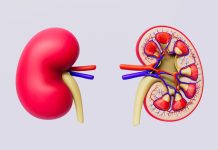
Diabetes is a chronic condition that affects people of all ages.
While there is no cure for diabetes, it is crucial to maintain a healthy lifestyle to manage it.
A Baylor College of Medicine expert explains the different types of diabetes and the risks.
Symptoms
Some common symptoms of diabetes include being more thirsty than usual; urinating often; constant hunger despite eating well; extreme fatigue; feeling irritable or experiencing changes in mood; blurry vision; slow healing sores; getting oral, vaginal or skin infections; or losing weight without trying.
“Some people might not have symptoms when the disease is mild.
It depends on how high glucose levels are and how severe the disease is,” said Dr. Ruchi Gaba, endocrinologist and associate professor in the Margaret M. and Albert B. Alkek Department of Medicine at Baylor.
Causes
The root of diabetes varies by the type. Type 2 diabetes is more common and is usually caused by lifestyle and genetic factors.
Lifestyle factors might include being overweight, obesity, a diet full of carbohydrates, sugars and fats, or lack of physical inactivity.
Type 1 diabetes is an autoimmune disease that destroys insulin-producing beta cells in the pancreas.
Gestational diabetes is caused by the hormonal changes of pregnancy along with other genetic and lifestyle factors.
Other rare causes might include genetic mutations, damage or removal of the pancreas or taking certain medications like steroids. People with gestational diabetes have a higher risk of developing diabetes later in life.
Risk factors
Different groups of people are at-risk for developing diabetes:
People who are overweight or obese
People above the age of 35
People with a family history of diabetes
Different ethnic groups: African American, Indian American, Asian American, Pacific Islander, Hispanic and Latino
Being physically inactive or sedentary
People with prediabetes
People with gestational diabetes
“As you age, you’re at a higher risk, so we recommend screening,” Gaba said. “Children and teens can also develop type 2 diabetes, but the risk increases as you get older.”
Management and lifestyle changes
People with type 1 diabetes have to take insulin through shots or a pump. With type 2 diabetes, lifestyle changes such as losing weight, eating healthy, and exercising can help manage the condition. If these options are not working, one might start taking diabetes medications or insulin.
Gaba recommends choosing food items that are lower in fat and calories and higher in fiber, while focusing on fruits, vegetables and whole grains.
People should also spend 150 minutes per week doing moderate-to-vigorous aerobic activity, such as walking, cycling, running or swimming, as well as resistance exercises twice a week.
“Avoid long stretches of inactivity and get up every 30 minutes to move around,” she said.
Written by Homa Warren.
If you care about diabetes, please read studies about This drug combo can treat type 2 diabetes in the long run effectively and findings of Eating fewer than 3 meals a day may help reduce risk of type 2 diabetes and obesity.
For more information about diabetes, please see recent studies about 5 dangerous signs you have diabetes-related eye disease, and results showing why pomegranate is super fruit for people with diabetes.
Follow us on Twitter for more articles about this topic.
Copyright © 2023 Knowridge Science Report. All rights reserved.



